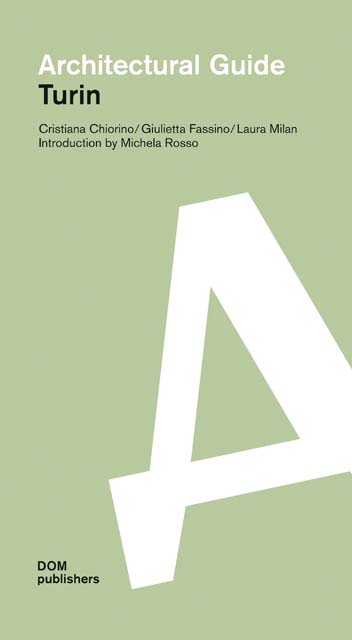Press information
 | Cristiana Chiorino / Giulietta Fassino / Laura Milan Architectural Guide Turin 134 × 245 mm, 232 pages 420 images, softcover 978-3-86922-411-4 (english) 978-3-3-86922-553-1 (italian) EUR 38,00 / CHF 46,40 October 2015. DOM publishers, Berlin |
New from DOM publishers:
Cristiana Chiorino / Giulietta Fassino / Laura Milan
Architectural Guide Turin
Turin is known as an industrial city – primarily as the home of Fiat. Anyone who does not know the city at the foot of the Alps will be surprised to find it is a pleasant place to stay amid baroque and art nouveau architecture, the many arcades and spacious streets – even if one does not come here because of the cafés and the good food, but because of the architecture.
The Architectural Guide Turin presents 150 buildings which date back from 1900 to the present day. These can be visited during sixteen longer or shorter tours which start in the Roman, baroque centre. These lead from the large-scale network of streets – when Turin was the first capital of the newly-formed Italy in the nineteenth century – to modern industrial monuments, all the way to regions of northern Piemont. There may also be found the works of Oscar Niemeyer in Pianezza and San Mauro, the modern architecture commissioned by von Olivetti and the wineries which have recently been protected by UNESCO.
Turin’s architectural history is closely linked to the development of the car manufacturer Fiat in the twentieth century. In her introduction to the history of the city, Michela Rosso describes the journey from the first Lingotto factory – which was celebrated as a milestone of modernism – to the Mirafiroi plants which followed and the associated residential housing. Prominent representatives of Italian modernism, such as Carlo Mollino or Pier Luigi Nervie, left behind several public and private buildings. However, it is only in the past twenty years that Turin has witnessed the largest construction boom in its history. In search of a new identity, the city became a laboratory for the transformation of industrial heritage, also in part owing to the 2006 Olympic Winter Games. Today Turin has become a centre of business, culture, leisure and sport with associated events and institutions. Accordingly, more than a third of the projects presented in this architectural guide were built or reconstructed between 1995 and 2015. The book thus acknowledges the fact that the recent architectural history of Turin has been the subject of very little attention.
Following on from Venice and Milan, this is the third architectural guide from DOM publishers which presents the more current architecture of a northern Italian city.
 |  |  |
| all images © Fabrizio Mauro | ||
| View all press images |
The travel guides by DOM publishers are intended for those interested in building culture and are presented in a convenient format. A careful selection of projects and expert proofreading make these books a (lexical) reference work, while background information and a fresh design stimulate imaginary journeys. The series was awarded an Iconic Award 2014 by the German Design Council. For further information see: www.dom-publishers.com



